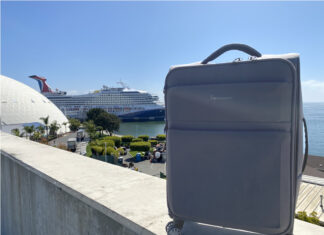In the past few days, the cruise industry has strongly called on the CDC to provide an update on its guidance to return to sailing. Since offering the Framework for Conditional Sailing Order in October 2020, the CDC had been quiet regarding further instructions on how to set sail again.
At the same time, cruise leaders said that the framework — which was provided before vaccines were approved or available — is already outdated.
On Friday, the CDC finally released updated technical instructions on the next steps to return to sailing. The orders posted on the CDC website cover everything from what’s needed from agreements with local ports and health authorities to vaccines to embarkation procedures and more.
You can read the new instructions here, and we’ve covered many of the highlights below.
General Highlights of the New Instructions
The coverage of these instructions is wide-ranging. Among the details that stood out to us include:
- Cruise lines must document the approval of all U.S. port and local health authorities where it plans to port during both simulated voyages and passenger trips. The CDC laid out numerous specifics regarding all aspects of cruising in the pandemic era that must be included in the agreements.
- The agreement “must include a port operations component (including a vaccination component), a medical care plan component, and a housing component…”
- Cruise lines must have a plan and timeline for vaccinating crew before resuming operations. The CDC recommends that all eligible port personnel (such as port agents and baggage handlers) and passengers also get a vaccine, but doesn’t appear to require it like with crew members. However, it does seem that cruise lines, ports, or health authorities can require the vaccine if they choose to do so.
- The agreements between cruise lines, ports, and health authorities must lay out embarkation procedures designed to minimize contact between passengers and port employees.
- There must be procedures in place for testing travelers on embarkation day and how to handle positive cases.
- Lines must be in agreement with authorities for disembarkation procedures in the case of an outbreak, as well procedures to avoid the congregation of passengers boarding or debarking, and avoiding embarking and debarking passengers from using the same areas in the terminal within 12 hours of each other.
- Cruise lines must have agreements in place for housing passengers/crew on land if needed for isolation or quarantine.
In all, the new instructions come in at more than 4,000 words and go into numerous specific details about what must be in the agreements in place before cruises are permitted to sail.
A Go-Ahead to Cruises From the United States?
So do these new instructions mean that cruises have the green light to sail again? At this time there are still plenty of steps to be ironed out.
These instructions certainly give more insight into the sort of agreements need to be in place before they can sail again, as well as what should be within those agreements. It also lays out some more technical requirements around vaccines and other aspects of sailing safely.
But even after these agreements are finalized, there are still more steps to go. As the CDC says, these instructions are provided for “Phase 2A” of the framework. The agency may update for additional phases 2B through 4.
Still on the table, even after these agreements are made between cruise lines and ports, are simulated voyages and applying for a Conditional Sailing Certificate. Both of these must be done before returning to sailing with paying passengers.
It is yet to be seen just how long it will take cruise lines to digest and implement the new instructions from the CDC, and we’d expect some comment soon. On the bright side, it is a good signal that the agency seems to finally be looking toward a future when cruises sail again.












